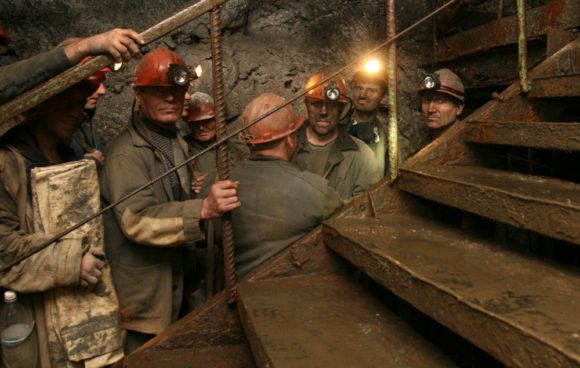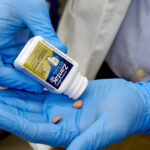The inspector general for the U.S. Department of Labor is urging the government’s mine safety agency to tighten restrictions on a dangerous substance that is inhaled by coal miners.
A report from the inspector general’s office said the Mine Safety and Health Administration, or MSHA, has not done enough to protect miners from exposure to silica dust. It said MSHA has had the same silica standard since the 1960s, according to a report by the Charleston Gazette-Mail. The substance is believed to be a contributor to black lung disease.
Black lung deaths have declined since the 1970s. But since 2000 there has been an increase in the number of rapidly progressing cases in certain regions, including the Appalachia areas of Kentucky, West Virginia and Virginia.
Medical experts say silica, which is found in rock dust, could be causing the spike. Miners are digging in smaller coal seams, meaning they are hitting more rock that contains the silica, which is more damaging to lungs than coal dust.
The inspector general’s report said MSHA does not issue citations or fines for excess silica exposures as a standalone violation, because it is tied to exposure limits for coal mine dust. It also said MSHA’s silica sampling protocols may be too infrequent.
MSHA chief David Zatezalo told the inspector general’s office last month that more study and public input was needed before making a rule change on silica. Zatezalo said MSHA would also study a recommendation to increase the frequency of inspector samples where they were needed.
MSHA’s coal mine silica exposure limit is 100 micrograms per cubic meter of air. The Occupational Safety and Health Administration lowered its silica exposure limit in workplaces to 50 micrograms in 2016.
Was this article valuable?
Here are more articles you may enjoy.



 Pfizer Agrees to Settle More Than 10,000 Zantac Cancer Lawsuits
Pfizer Agrees to Settle More Than 10,000 Zantac Cancer Lawsuits  Reserve Strengthening for Casualty Lines Not Over: Moody’s
Reserve Strengthening for Casualty Lines Not Over: Moody’s  Liberty Mutual Posts $1.5B Net Income for Q1, Reversing Loss
Liberty Mutual Posts $1.5B Net Income for Q1, Reversing Loss  Viewpoint: The 10 Major Risks Shaping Insurance Today
Viewpoint: The 10 Major Risks Shaping Insurance Today 

